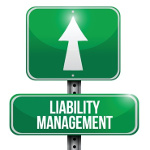Lisa Glahn has joined Foley & Lardner LLP’s Construction Practice as a partner in the Boston office.
Glahn’s practice focuses on construction, real estate and project development, where she counsels on strategic deal structuring, contract formation, complex litigation and claims resolution, among other issues. She represents clients in both the public and private sectors, including contractors, developers, lenders and owners through all project phases.
“Lisa has a versatile practice and can offer services from the transactional commencement of a project until the last dispute is resolved in litigation,” said Jeffrey Blease, chair of Foley’s Construction Practice. “She’s particularly adept at litigating and managing trial teams on complex, high-stakes projects that involve multiple parties.”
In a news release, the firm said:
Glahn has successfully handled construction litigation cases and disputes related to waste-to-energy and EPC projects, design-build ventures, and hospital, university, real estate and transportation development projects. On the transactional side, she drafts and negotiates general contracts, subcontracts, consultant agreements, construction management agreements, development agreements and other project related documents.
“Lisa has the judgment and experience to handle the most complex construction issues, of which there are many across Boston’s burgeoning industries and real estate market,” said Susan Pravda, managing partner of Foley’s Boston office. “In addition to the excellent service she provides to clients, Lisa regularly lends her professional skills to the local community and supports organizations that promote the greater good.”
From 2004 to 2005, Glahn worked as a special assistant district attorney with the Middlesex District Attorney’s Office, where she tried more than 30 cases and advocated for social justice and human rights on behalf of underrepresented and marginalized constituencies. She serves on the board of the non-profit organization Women in Construction, and is a former board member of the National Association of Women in Construction – Boston Chapter. Lisa is also a member of the American Bar Association, Massachusetts Bar Association and Women’s Bar Association.
Prior to joining Foley, Glahn was a member at Mintz Levin.
Join Our LinkedIn Group
 An article in Gray Reed & McGraw’s Texas Construction Law Blog offers some steps cleaning and restoration professionals can take in an effort to minimize the damage from a payment dispute with a client after a natural disaster.
An article in Gray Reed & McGraw’s Texas Construction Law Blog offers some steps cleaning and restoration professionals can take in an effort to minimize the damage from a payment dispute with a client after a natural disaster.
